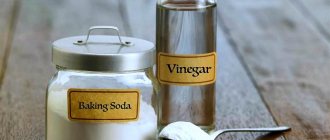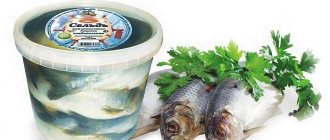What is dry ice
Dry ice is made from liquid carbon dioxide, i.e. CO2.
It expands as a result of the release of pressure, as a result of which the liquid turns into a “snow mass” with a sufficiently low temperature. Next, this mass is pressed into granules ranging in size from 3 to 18 millimeters or into blocks of various masses. Important: In the Odessa region, a child ate a laundry capsule and ended up in intensive care
At normal atmospheric pressure, the temperature of dry ice is -79 degrees Celsius. However, if dry ice is heated, it turns into gas.
History of dry ice
This substance was invented in France in the early 19th century, but it was first used commercially in the 20s of the 20th century in the USA. This is a very valuable product because it transforms into gas without passing through the liquid phase. In addition, ordinary ice produces two to three times less cold than dry ice at the same temperature conditions.
It is usually used for cooling food products, retail ice cream, beer, mineral water, etc., when cooling using a refrigerator is undesirable or for some reason is technically impossible.
Where is dry ice used?
- In the food industry:
Dry ice is widely used in the transportation of frozen and refrigerated foods and substances. And also in the production of meat and confectionery products, it is added to minced meat or dough, cooling the mass to the desired temperature. It is popular in the restaurant sector, for cooling without the use of electricity or for creating various visual effects.
Dry ice is used in the food industry / Photo: Unsplash
- In industry:
Dry ice is used as a coolant in industrial processes, such as machining or thermal shrinking of parts. Fine dry ice granules are used for blast cleaning of various surfaces and equipment, for example in printing houses or the food industry.
- In performances and events:
Dry ice is also used in fog machines to create fog effects in theater productions and events.
Dry ice at children's parties / Photo: Ganz
Cryogenic blasting (non-abrasive blast cleaning of various surfaces)
Cooling for transportation and storage of meat, fish and fruit and berry products. Dry ice has a freezing ability that is many times greater than that of water ice. Freezing of meat, fish and fruit and berry products
Food storage during air travel
Bakery industry. Dry ice slows the growth of yeast bacteria up to a certain time
Branding of cattle and horses
Emergency replacement of faulty refrigerators and freezers
Carbonation of drinks (soda, cocktails)
Chemical reaction retardant. Low temperature slows down the process of some chemical reactions. For example, dry ice is used to transport some adhesives or as a neutralizing agent for alkalis. Chemical pressurizing agent. When dry ice evaporates, it expands about 800 times and absorbs heat. It can be used to create excess pressure in containers. FOR QUALIFIED PERSONNEL ONLY!
Cleaning of molded plastics and rubbers
Storing dry food. When dry food is stored for a long time in an airtight container, it creates an environment that prevents the development of mold and insects.
Creation of special effects in show business, photography, etc.
Rodent control. If you pour granular dry ice into a rodent's hole, after a while carbon dioxide will displace the oxygen from it. To achieve the full effect, you need to make sure that the hole is not through.
Preserving flowers. Dry ice cools flowers and delays their opening (blooming). Maintaining a stable low temperature significantly slows down the flowering process. To avoid freezing, do not allow flowers to come into direct contact with dry ice.
Removing ceramic floor tiles. Ceramic tiles can be removed from the floor by sprinkling some dry ice on the surface. The tiles are easier to remove due to cooling and compression. This procedure can be time-consuming to remove a large number of tiles, but for removing 1-2 tiles it is very convenient.
Storage of catch and hunting spoils
Used as an inert medium. Because carbon dioxide is heavier than air and does not support combustion, dry ice is used to displace oxygen from some containers, such as to remove underground tanks containing flammable gases or liquids.
Dismantling metal parts. Dry ice is used to remove certain metal parts, such as bearings or bushings. It is necessary to add dry ice to 90% alcohol to cool it to approximately -78.5 ° C. It can then be used like liquid nitrogen to dismantle parts.
Medical industry. Used for storing and transporting medications.
Growing plants. Fertilizing greenhouse plants with carbon dioxide
In the field of funeral services.
Cooling of computer processors
For entertainment purposes: When metal comes into direct contact with dry ice, the metal will make a loud, high-pitched sound. This experiment can be done by placing a metal spoon in dry ice. You can pour a little water into a spoon to observe the freezing process. Be careful as prolonged contact will cause the spoon to become so cold that it may damage your skin if it comes into direct contact. Foggy bubbles. When a soap solution is added to a mixture of water and dry ice, bubbles filled with dense fog are formed. Shot. If you put some dry ice pellets into a plastic film box, cover it with a lid and wait a little, the lid can shoot out several meters. In the same way, you can launch rockets with water, but this requires special devices. Inflating a rubber balloon or balloon. You can pour some dry ice into a ball, close it tightly and throw it into a pool or some body of water. At first the ball will sink, but as it fills with gas it will rise to the surface and explode. Sound lens. A balloon filled with carbon dioxide can act as a sound lens. The fact is that sound travels slower in carbon dioxide than in air, just as light travels slower through glass than through air or a vacuum. You can get a ball filled with carbon dioxide. putting some dry ice in it. Hold a ball filled with carbon dioxide at a distance of about 30 cm from your ear - the sounds passing through it should be amplified. As you can see, the uses for dry ice are simply countless! Almost any production and many types of businesses are potential consumers of dry ice and can use it to significantly increase their competitive advantages and the advantages of their products.
How to make dry ice industrially and at home
Dry ice is made using a simple but responsible process. In the first stage, carbon is converted into dioxide, then dioxide (CO2) in a gaseous state. The resulting substance is compressed to 5 atmospheres, uniformly and simultaneously lowering the temperature to minus 56.4 °C, turning it into a liquid medium. The pressure is then released and the expanded carbon dioxide liquid evaporates with intense heat absorption. In industry, gas for the synthesis of dioxide into ice is obtained from derivatives of the decomposition of limestone, dolomite and furnace gas formations.
The rapid cooling process prevents all the dioxide from evaporating; the remaining substance hardens, crystallizes into snow-like flakes and turns into solid carbon dioxide (CO2). To turn flakes into a full-fledged product, they are pressed into briquettes weighing up to 30 kg or cylinders with a diameter of up to 10 mm.
It is a mistake to believe that it is impossible to make dry ice at home. The technology for obtaining it is quite simple. The main thing is to find raw materials. As a source of liquid carbon dioxide, you can use a fire extinguisher marked “OU” (carbon dioxide).
How to make dry ice with your own hands? Step-by-step instructions will help.
- Wear gloves and safety glasses.
- Insert the fire extinguisher nozzle into the bag and secure with tape.
- Release the gas from the fire extinguisher by removing the release lever from the safety catch. After 3-4 seconds, close the tap.
- Remove the fire extinguisher hose from the bag. In the container you will find a white mass similar to foam.
- Transfer the finished product to a suitable container.
Safety precautions when working with dry ice
- The temperature of the substance is minus 78.5 °C, so for work it is necessary to wear heat-insulating gloves. It is prohibited to take ice with bare hands, since even short contact with unprotected skin can cause frostbite.
- When splitting or sawing dioxide into briquettes, it is necessary to use a plexiglass protective mask or strong glasses to avoid getting fragments of the substance on your face.
- When working with the substance, it is necessary to use only dry gloves (mittens), since wet ones instantly freeze and stick to the skin - the risk of frostbite is guaranteed.
- Manipulations using carbon dioxide should be carried out in a room with good ventilation. If people or pets are present, precautions must be tripled.
- It is strictly forbidden to store the substance in tightly closed containers (jars with screw caps, PET containers, etc.). This is extremely dangerous, since during intense evaporation, the dioxide expands 800 times. If the container explodes, it can cause injury to others.
Carbon dioxide, evaporated during the transformation of dioxide, is 1.5 times heavier than air, so it sinks down. At low concentrations the mixture is not explosive. However, in order to avoid force majeure situations, long-term work with this substance should be carried out in the fresh air or in well-ventilated, spacious rooms.
Cooling food with carbon dioxide has a number of significant advantages.
- It is well known that long-term storage of frozen foods reduces their nutritional, taste and energy value. Using quick freezing increases the shelf life by one and a half to two times. Thus, it is possible to reduce food spoilage in catering establishments and at home.
- At large enterprises, employees who were previously engaged in unnecessary work are being released: sorting and sorting products for sale in retail chains or preparing for the production of by-products or finished products.
- The costs previously incurred for running households and subsidiary plots are reduced many times over.
- The use of dry freezing technology made it possible to easily produce large stocks of food products in a varied assortment. Dry ice makes it possible to sell products in hypermarkets and wholesale shopping centers all year round.
- Pre-treatment with dry ice and quick freezing is possible with any products obtained from animals and poultry: meat, meat products, fish and its derivatives, fermented milk and egg products, various fats. Quick freezing is especially effective when processing meat and meat products, since they do not lose their biological and taste characteristics.
- Quick freezing preserves the beneficial properties of products, as well as vitamins and microelements, for a long time. In them, histological, microbiological, physicochemical and biochemical processes that affect the energy and gastronomic value of products and are responsible for their safety are suspended, but preserved.









